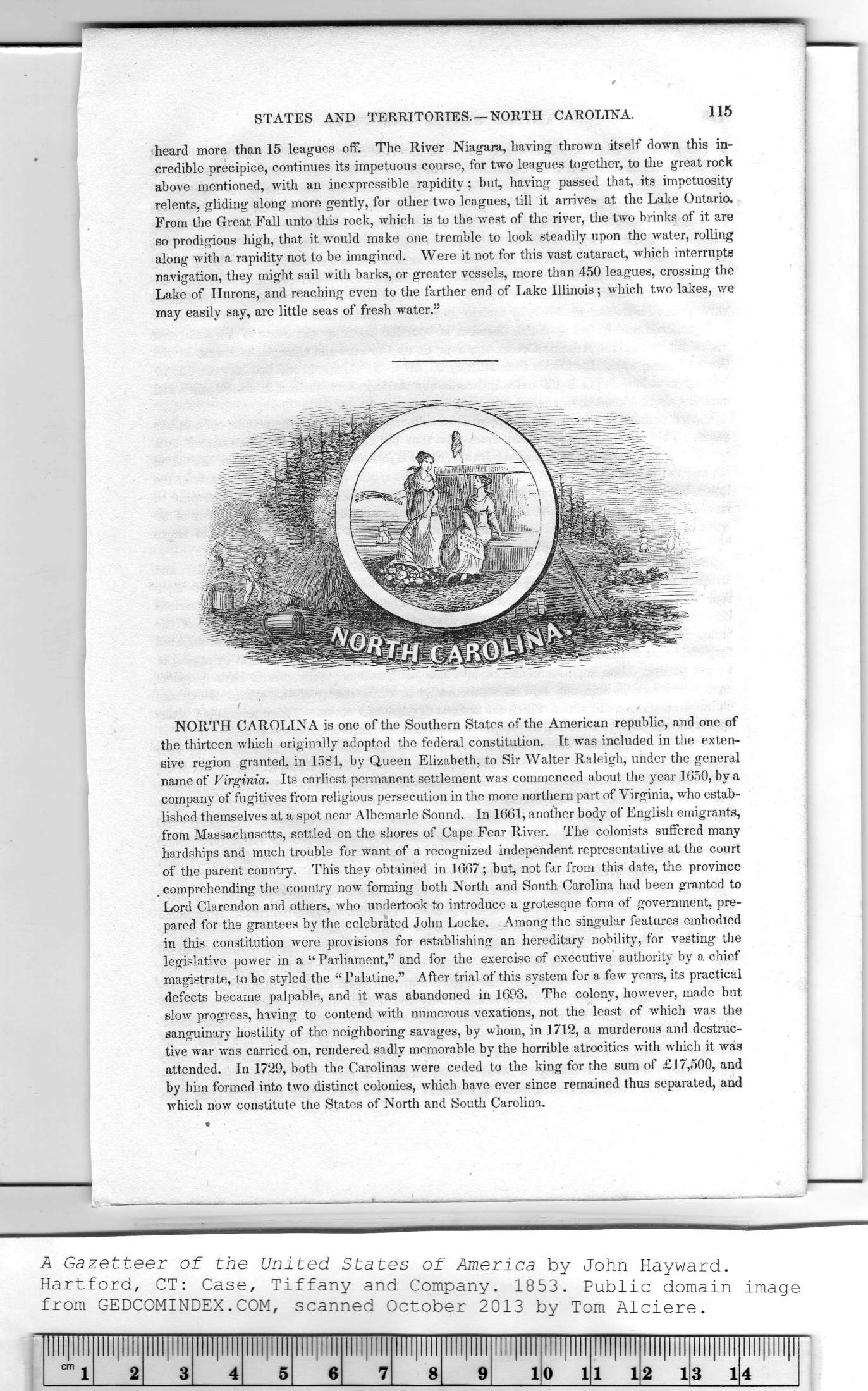|
|
Note: Ctrl and + increases the font size of the text below, Ctrl and - decreases it, and Ctrl and 0 resets it to default size.
STATES AND TERRITORIES.—NORTH CAROLINA. 115
heard more than 15 leagues off. The River Niagara, having thrown itself down this in-
credible precipice, continues its impetuous course, for two leagues together, to the great rock
above mentioned, with an inexpressible rapidity; but, having passed that, its impetuosity
relents, gliding along more gently, for other two leagues, till it arrives at the Lake Ontario.
From the Great Fall unto this rock, which is to the west of the river, the two brinks of it are
so prodigious high, that it would make one tremble to look steadily upon the water, rolling
along with a rapidity not to be imagined. Were it not for this vast cataract, which interrupts
navigation, they might sail with barks, or greater vessels, more than 450 leagues, crossing the
Lake of Hurons, and reaching even to the farther end of Lake Illinois; which two lakes, we
may easily say, are little seas of fresh water."
NORTH CAROLINA is one of the Southern States of the American republic, and one of
the thirteen which originally adopted the federal constitution. It was included in the exten-
sive region granted, in 1584, by Queen Elizabeth, to Sir Walter Raleigh, under the general
name of Virginia. Its earliest permanent settlement was commenced about the year 1650, by a
company of fugitives from religious persecution in the more northern part of Virginia, who estab-
lished themselves at a spot near Albemarle Sound. In 1661, another body of English emigrants,
from Massachusetts, settled on the shores of Cape Fear River. The colonists suffered many
hardships and much trouble for want of a recognized independent representative at the court
of the parent country. This they obtained in 1667; but, not far from this date, the province
comprehending the country now forming both North and South Carolina had been granted to
Lord Clarendon and others, who undertook to introduce a grotesque form of government, pre-
pared for the grantees by the celebrated John Locke. Among the singular features embodied
in this constitution were provisions for establishing an hereditary nobility, for vesting the
legislative power in a “ Parliament," and for the exercise of executive authority by a chief
magistrate, to be styled the “ Palatine." After trial of this system for a few years, its practical
defects became palpable, and it was abandoned in 1693. The colony, however, made but
slow progress, having to contend with numerous vexations, not the least of which was the
sanguinary hostility of the neighboring savages, by whom, in 1712, a murderous and destruc-
tive war was carried on, rendered sadly memorable by the horrible atrocities with which it was
attended. In 1729, both the Carolinas were ceded to the king for the sum of £17,500, and
by him formed into two distinct colonies, which have ever since remained thus separated, and
which now constitute the States of North and South Carolina.
|
lllllllll |
llll|llll |
llll|llll |
lllllllll |
lllllllll |
lllllllll |
lllllllll |
lllllllll |
lllllllll |
lllllllll |
lllllllll |
lllllllll |
lllllllll |
lllllllll |
llll|llll|l |
|
j |
2 |
3 |
4 |
5 |
6 |
7 |
8 |
9 |
1 |
0 1 |
1 1 |
2 1 |
3 1 |
4 |
|
